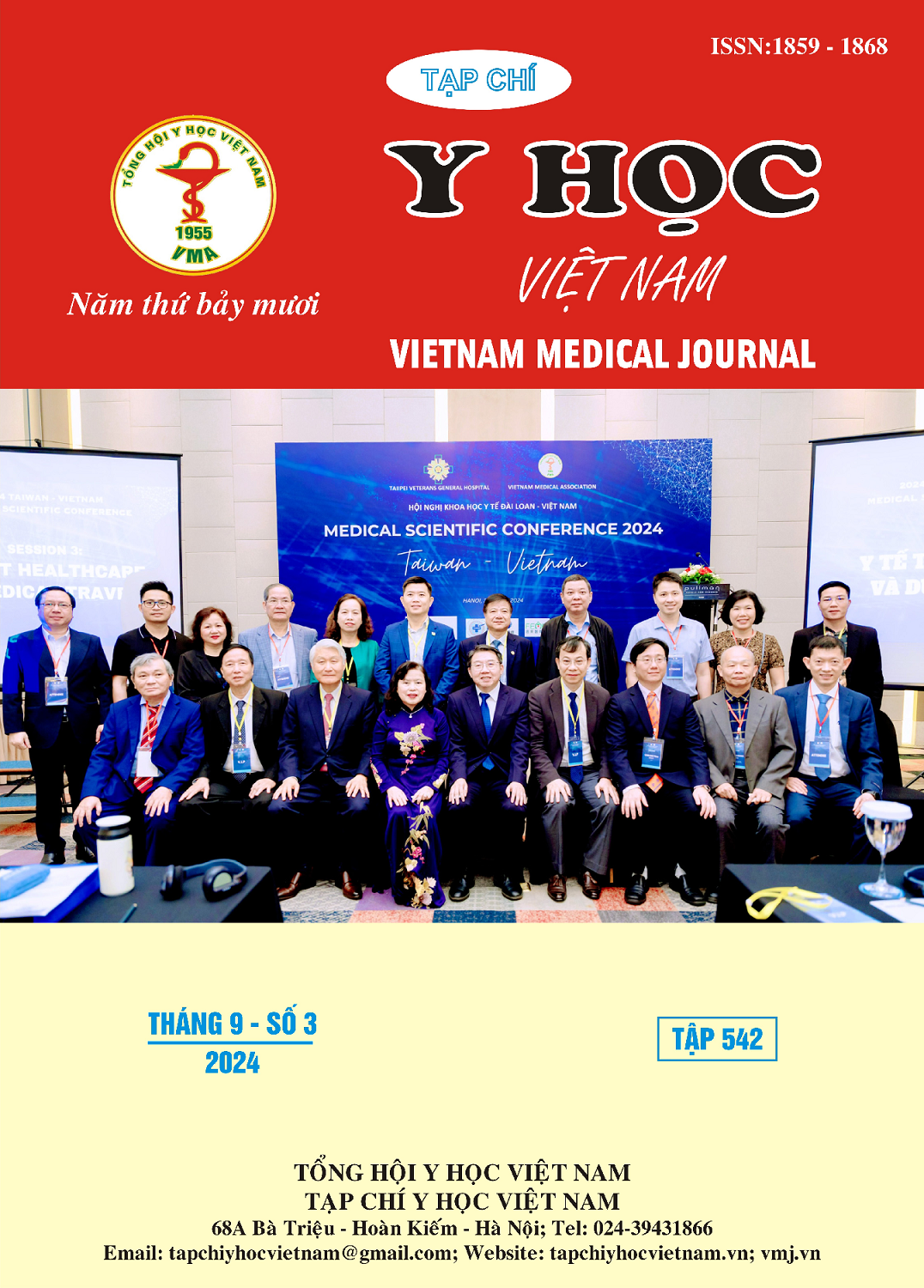THE ROLE OF CARTILAGE GRAFT IN ENDOSCOPIC TYPE 1 TYMPANOPLASTY: AUDIOLOGICAL AND MORPHOLOGICAL RESULTS
Main Article Content
Abstract
Background: Tympanoplasty has been performed for a long time with many different types and materials of grafts such as temporalis fascia, perichondrium, cartilage..., as well as with different access techniques such as endocanal approach, endoscopy... in which temporal fascia is the most commonly used grafting material for perforated eardrums. Due to high failure rate of temporalis fascia in adhesive otitis media, large perforations and advanced middle ear pathology alternate graft materials. Therefore, there is a need for advanced middle ear pathology replacement graft materials that are stronger and more resistant to infection being used. Cartilage graft has shown to be a potential graft material in such cases. Objectives: the purpose of this study was to evaluate the functional and anatomic results with cartilage graft in type 1 tympanoplasty. Materials and methods: The present prospective study was conducted among 52 patients of chronic otitis media between 16-62 years of age requiring tympanoplasty in department of Otolaryngology of Can Tho University Hospital of Medicine and Pharmacy. Results: The overall success rate of type 1 cartilage tympanoplasty was 92% in terms of perforation closure and post operative pure tone audiometry (PTA) after 12 weeks showed significant improvement with 0% of patients having severe hearing loss compared to before intervention which was 15.45. Conclusions: Based on the results of this study, it can be concluded that cartilage is more effective graft material in high-risk perforations, chronic ET dysfunction than fascia and audiological improvement with cartilage is found to be comparable with temporalis fascia. Besides, the use of endoscopy helps maximize damage intervention and brings convenience during surgery.
Article Details
Keywords
Cartilage, Graft uptake, ABG.
References
2. Lê Hoàng Trung, Nguyễn Minh Khoa (2019), "Nghiên cứu đặc điểm lâm sàng, cận lâm sàng của bệnh nhân viêm tai giữa mạn tính thủng nhĩ tại bệnh viện Đa khoa Kiên Giang năm 2019", Chuyên đề Tai-Mũi-Họng và Phẫu Thuật Đầu-Cổ, tr. 216-221.
3. Akyigit A, Sakalhoglu O, Karlidag T (2017), "Endoscopic tympanoplasty", Journal of otology, 12 (2), pp. 62-67.
4. American Speech Language Hearing Association (2015), Type, Degree, and Configuration of Hearing Loss, Audiology Information Series, Rockville.
5. Bolajoko O Olusanya, Adrian C Davis, Howard J Hoffman (2019), "Hearing loss grades and the International classification of functioning, disability and health", Bull World Health Organ, 97 pp. 725–728.
6. Dipesh Shakya, Ajit Nepal, MBBS, MS (2020), "Total Endoscopic Perichondrium Reinforced Cartilage Myringoplasty for Anterior Perforation", Ear, Nose & Throat Journal, pp. 1-7.
7. Figure, Elsevier (2016), "The Middle Ear", [cited Available from: https://healthlifemedia.com/ healthy/the-anatomy-of-the-human-ear-the-middle-ear/.
8. Huang T Y, Ho K Y, Wang L F, Chien C Y (2016), "A Comparative Study of Endoscopic and Microscopic Approach Type 1 Tympanoplasty for Simple Chronic Otitis Media", J Int Adv Otol, 12 (1), pp. 28-31.


